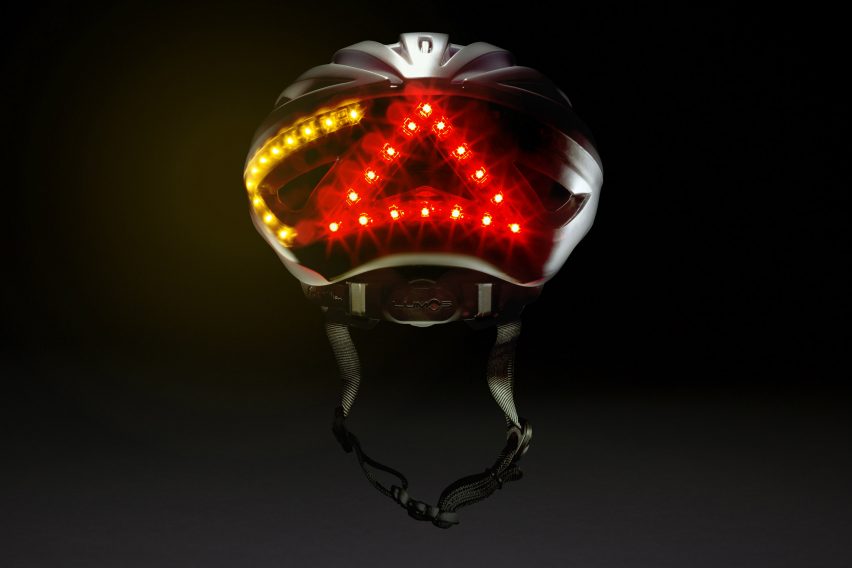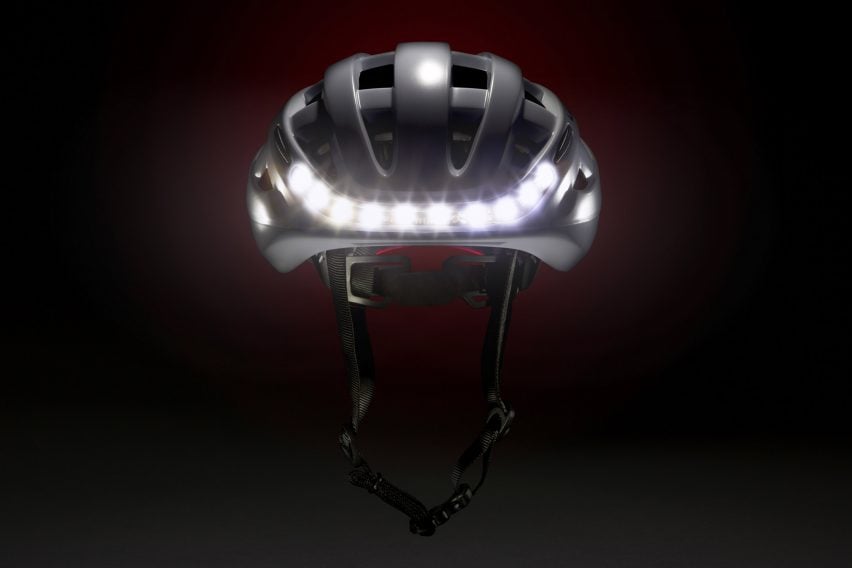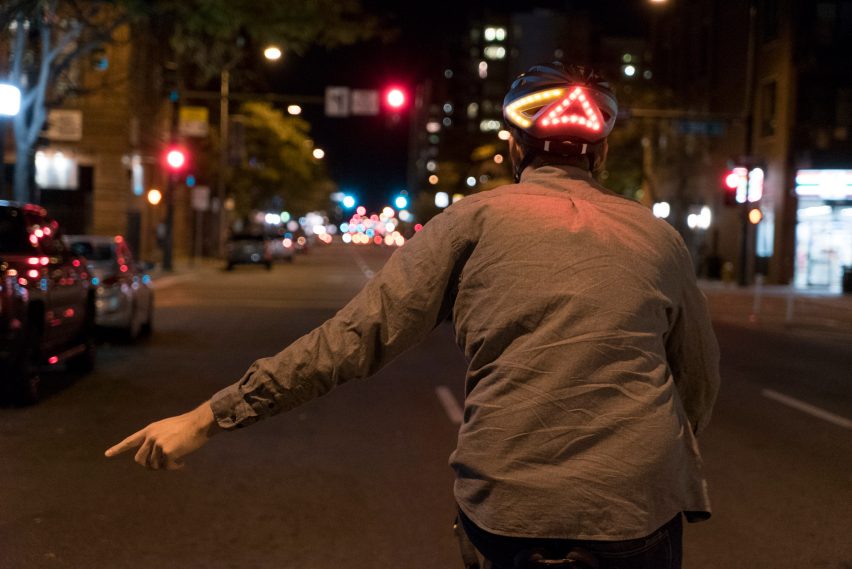Lumos smart bike helmet incorporates brake lights and indicators
A pair of engineers have designed a bike helmet that uses embedded lights to let drivers know when the cyclist is turning or braking.
Eu-wen Ding and Jeff Chen designed Lumos, which won the transport design of the year category at the 2016 Beazley Designs of the Year awards, to help both cyclists and drivers feel more comfortable sharing roads.

A set of over 60 integrated LEDs in the front, back and side of the helmet light up in different colours to show a rider's next move.
The brake light is triggered automatically, by the cyclist slowing down. A built-in accelerometer measures speed, causing a bright red triangle shape to light up when the bike is braking.


The indicators, meanwhile, are triggered by the rider, who pushes a button on their handlebars when approaching a turn. The buttons are attached to a wireless remote that communicates with the helmet, activating turn signals on either side of it.
Lumos also replaces standard clip-on bike lights, which are easily stolen or forgotten. White lights at the front and red at the back continuously flash to stand out to drivers and pedestrians.



The helmet is water resistant so it can withstand rainy conditions. It's turned on with a single button, and connects via USB to be charged – which takes around two hours.
According to the company, the handlebar remote lasts for months before needing charging, and the helmet for around a week if used for up to 30 minutes a day. A companion app can be used to monitor battery life, as well as change light preferences.


Chen and Ding launched Lumos in 2015 after being funded to the tune of $800,000 on Kickstarter.
"We heard countless stories of how cyclists felt invisible or vulnerable on the road," they explained. "Cyclists regularly cited riding with traffic as a troublesome but necessary part of their ride."


"Similarly, drivers described how they felt frustration or fear due to the difficult in seeing or predicting the movements of cyclists riding on the road with them."
Another innovative helmet was the recipient of the James Dyson Award in 2016, winning for its unusual honey-comb shaped structure made from layers of paper, which allowed it to fold up when not in use.